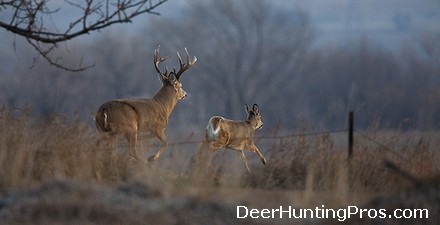Question: “Looking for some information on when the deer rut takes places in Texas. Just started deer hunting last year and hear that hunting the rut is the best time to see bucks. I got on a lease this year and plan on hunting in the Hill Country. The other guys on the lease said there were some good bucks on camera last year but several of the older deer did not get shot. Hoping I can get the drop on one of them. Plan on putting out cameras in the upcoming months to see what is out there. So when is the whitetail deer rut in Blanco County?”
Deer Hunting Pros: Well, it can vary somewhat from year to year, but usually not by a whole lot. In Central Texas, the peak of the deer rut runs somewhere from October 30 through November 7 each year. The timing of the rut is most dependent on the length of the days (amount of daylight), but temperature in my opinion does affect the intensity of activity. I think cooler weather means bucks will chase harder and longer, increasing the chances of observation by a hunter. The rut is a great time to be out deer hunting, but the rut also plays an important role in a deer population.

Without the rut there will be no fawns the following summer. The gestation of a deer is about 200 days, plus or minus a few days. Many fawns will start to be born by mid-May in your part of Texas. Make sure to watch for fawns at your deer hunting lease, especially if you use game cameras. You can back-date the rut by counting back 200 days once you see the first fawn on camera. Subtract another few days since most fawns don’t move around a lot at first. The deer rut varies from area to area though. Where I hunt in South Texas, the peak of the rut is roughly December 15 through the 25, so that means peak fawning dates are approximately late June or early July.
Texas Parks and Wildlife: “Conception dates for the Central Texas region ranged from as early as October 9 to a late date of January 30. The Edwards Plateau, Texas’ highest deer production region, was divided into three areas for the study. The eastern part had a peak breeding date of November 7. Peak breeding for the central portion was November 24, and the western area had a peak date of December 5. An average of 90 percent of the does were bred and the average number of fetuses found was 1.3 per doe. The majority (90%) of the fawns are born by June 14 in the eastern area, June 26 in the central area, and by July 13 in the western area.”